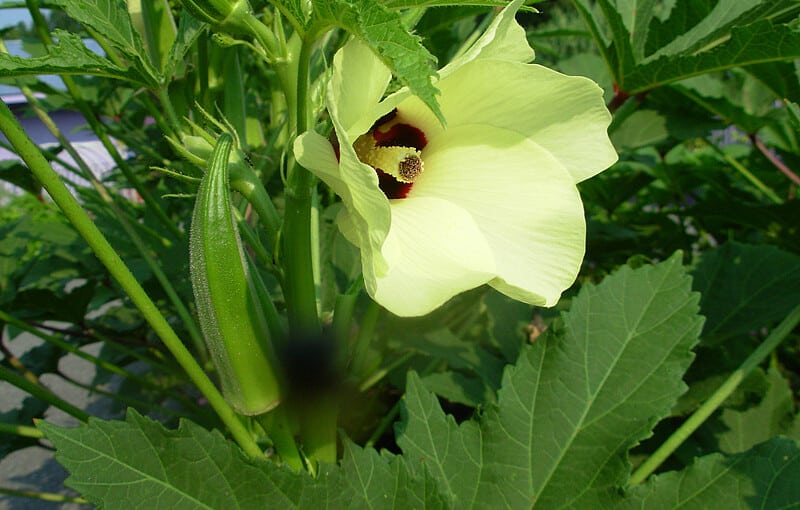Although you may not be too familiar with an okra plant, you have undoubtedly seen the pods before. Okra pods are long, narrow, and green. The pods, seeds, and leaves are edible and are often used in eastern cuisine. Though they have a mild taste, the somewhat slimy texture is what they are most known for.
Contents
- 1. Cotton Leaf Mallow (Cienfuegosia hildebrandtii)
- 2. Cheese Plant (Malva neglecta)
- 3. Musk Mallow (Malva moschata)
- 4. Tall Mallow (Malva sylvestris)
- 5. Cocklebur (Xanthium strumarium)
- 6. Hollyhock (Alcea rosea)
- 7. Marshmallow (Althaea officinalis)
- 8. Cotton (Gossypium hirsutum)
- 9. Jimson Weed (Datura stramonium)
Okra (Hibiscus esculentus) is a part of the hibiscus or mallow family. The leaves of an okra plant are broad and notched. They also tend to be covered in white fuzz. Okra plants produce large, colorful flowers like many other mallows. Despite their significant pods, many other plants resemble the okra, including:
- Cotton leaf mallow – the flowers resemble that of an okra
- Cheese plant – the leaves and flowers resemble okra plants
- Musk mallow – the shape of the plant and leaves resemble okra
- Tall mallow – the leaves and flowers look like okra
- Cocklebur – the leaves look like those of an okra
- Hollyhock – the flowers and leaves look like okra plants
- Marshmallow – the shape of the plant looks like an okra
- Cotton – the leaves look like okra leaves
- Jimson weed – the plant’s shape and leaves look like those of an okra
Considering not all these plants are edible, it might be worth knowing how they compare to okra plants. See the descriptions below if you want to know more about the differences and similarities between these nine plants and okra.
1. Cotton Leaf Mallow (Cienfuegosia hildebrandtii)
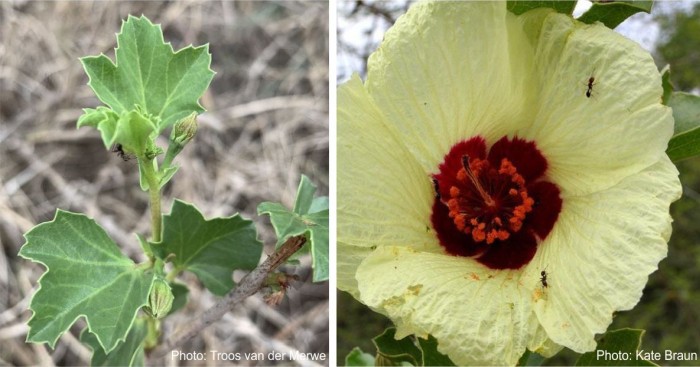
A cotton leaf mallow is also a member of the mallow family, which is why it shares characteristics with an okra plant. Cotton leaf mallow grows 6 to 9 feet tall, making it the same size as okra (2 to 6 feet). Cotton leaf mallow flowers also look precisely like okra flowers.
Cotton leaf mallows have different leaves to okra, though, as their leaves are more rounded and covered in white powder. Like okra plants, cotton leaf mallows are edible and used for medicinal purposes.
2. Cheese Plant (Malva neglecta)
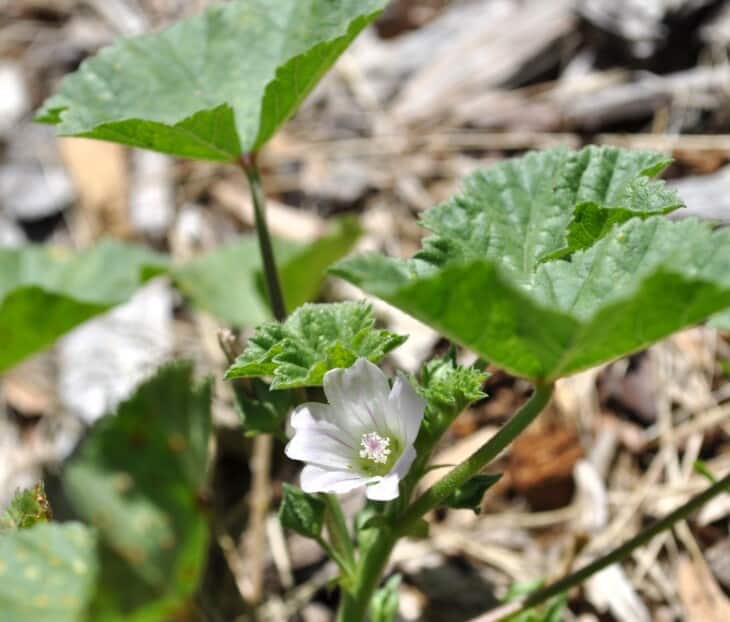
Cheese plants are also part of the mallow family, making sense of their similarities with an okra plant. Cheese plants (also known as dwarf mallows) grow about 20 inches tall, making them look like young okra plants.
Cheese plants have flowers with similar shapes to okra flowers, but they come in various colors and have stripes down the middle of each petal. Their leaves also resemble those of okra plants. You can tell a cheese plant apart from okra based on its size, flowers, and shape of its seed pods.
Cheese plants produce round, segmented seed pods that look like tiny pumpkins. Like okra, the dwarf mallow is also edible.
3. Musk Mallow (Malva moschata)
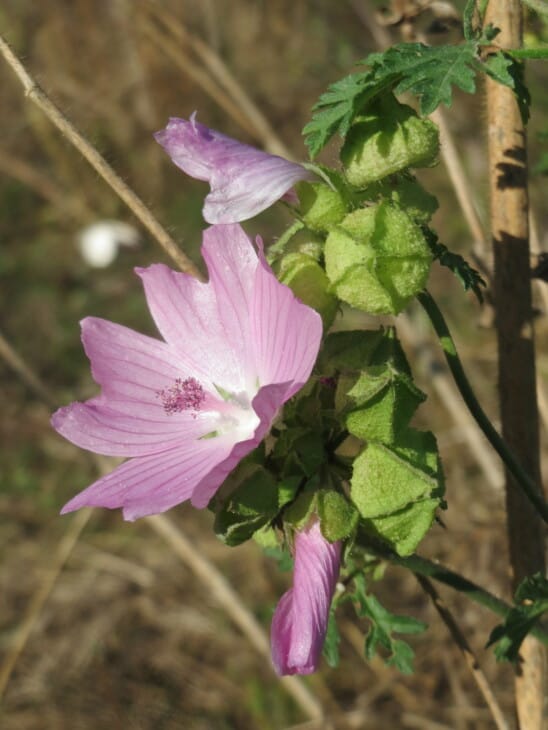
The musk mallow is one plant that resembles okra very closely. Not only does a musk mallow stem from the same family, but it also has the same flowers, leaves, and size as an okra. The musk mallow grows 2 to 6 feet tall and has broad notched leaves.
Musk mallows produce beautiful, large pink flowers that look like okra flowers. Unlike the okra, musk mallows don’t produce elongated seed pods. Yet all parts of the musk mallow are still edible.
4. Tall Mallow (Malva sylvestris)
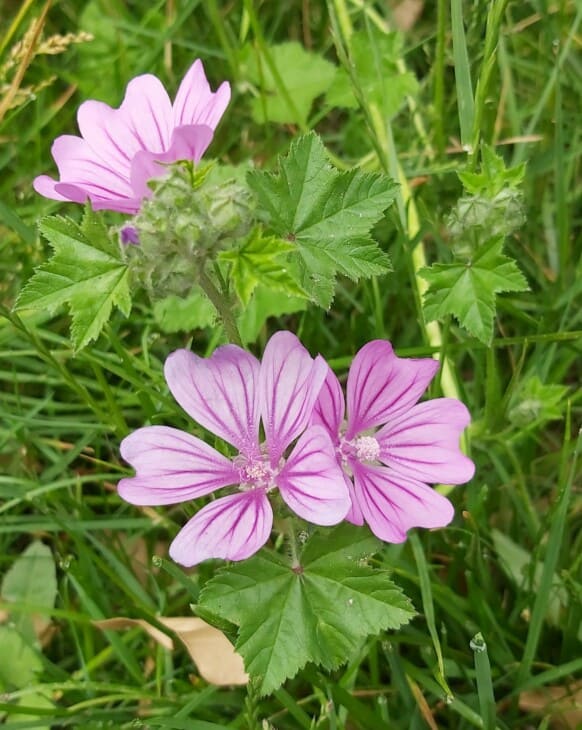
For another okra lookalike, consider the tall mallow. Tall mallows grow about 8 feet tall, making them close in size to the okra. Tall mallows also have the same notched leaves, and their flowers look remarkably similar.
Okra flowers are white with black or brown centers, while tall mallows produce white, red, pink, or purple flowers. Tall mallows don’t produce pods the same way as okra, which is one of the ways to tell the plants apart.
Still, given the many similarities between these plants, it is easy to mistake tall mallow for okra.
5. Cocklebur (Xanthium strumarium)
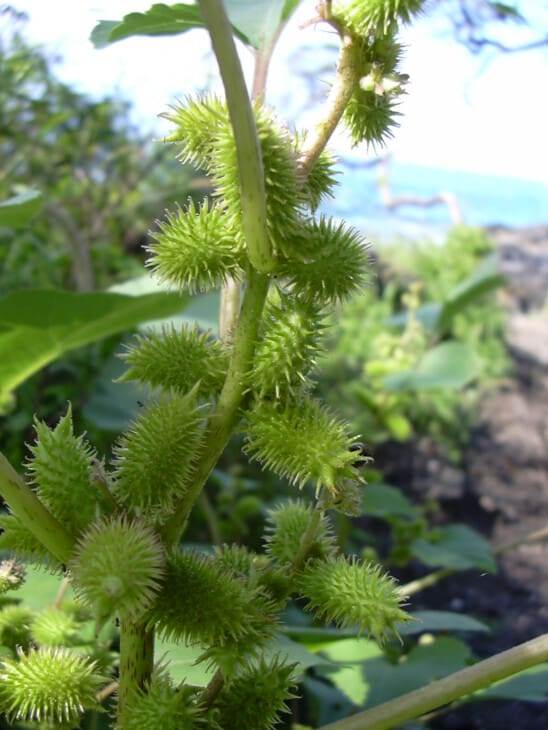
The cocklebur plant may not be a part of the mallow family, but this doesn’t stop people from mistakenly taking it for okra. A cocklebur weed grows up to 5 feet tall and has the same notched leaves as okra plants.
Cocklebur weeds have long, slender green stems, just like okra plants. They don’t, however, produce flowers. Instead, you may see spiky seed pods form along the plant’s stems. These pods dry out and release the seeds.
Unlike the okra plant, all parts of the cocklebur are inedible and poisonous. Fortunately, there are enough differences between it and the okra that one won’t easily mistake a cocklebur weed for okra. If you notice these weeds in your garden, remove them as soon as possible to prevent an infestation.
6. Hollyhock (Alcea rosea)
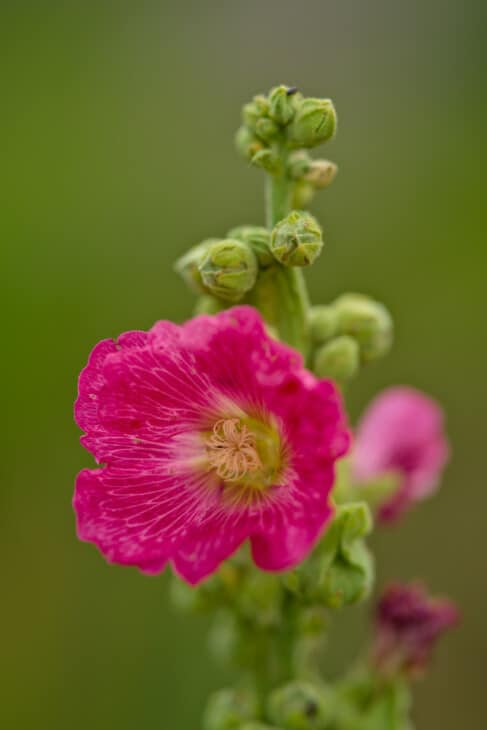
Hollyhock is yet another plant one might compare with okra due to its size and shape. Hollyhocks grow between 3 and 8 feet tall and produce large, colorful flowers with giant petals, like okra plants. Hollyhocks also have broad, notched leaves, which makes it easier to mistake for okra.
Hollyhocks also produce seed pods that come when the flowers die, but the seed pods don’t look like those of okra plants. Instead of being elongated, hollyhock plants have round, bell-shaped seed pods.
Like many of the plants in this list, all parts of the hollyhock plant are edible. They don’t have pods like okra, but you can still eat the leaves, flowers, and roots.
7. Marshmallow (Althaea officinalis)
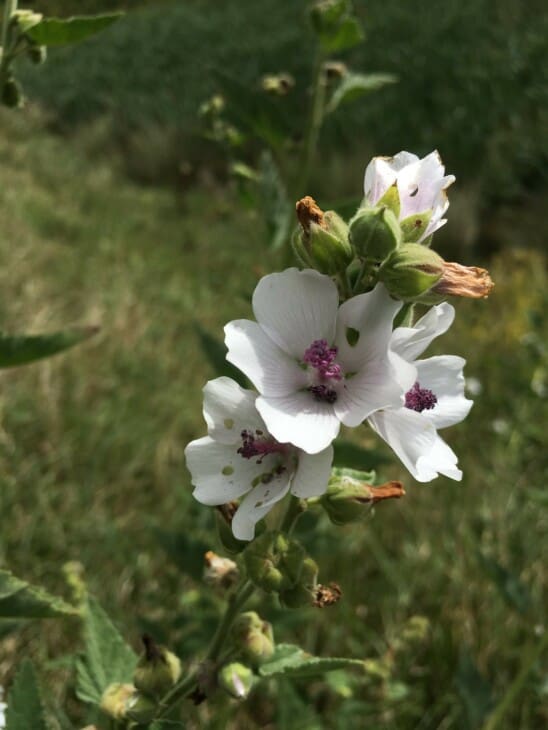
When talking about mallows, you cannot exclude marshmallows from the list. Like many other mallows, marshmallow plants draw a remarkable resemblance to an okra plant. The flowers of a marshmallow plant look identical to okra flowers. They are white with a purplish center.
Marshmallow plants grow 3 to 4 feet tall, making them the same size as okra. Furthermore, marshmallows also have broad, flat leaves. The leaves aren’t as notched as those of an okra plant, which is one way to tell them apart.
Like the okra, a marshmallow plant is entirely edible. As the name suggests, marshmallow plants were used to make marshmallows in ancient times. The marshmallow plant also has seed pods, but they look different from okra pods.
8. Cotton (Gossypium hirsutum)
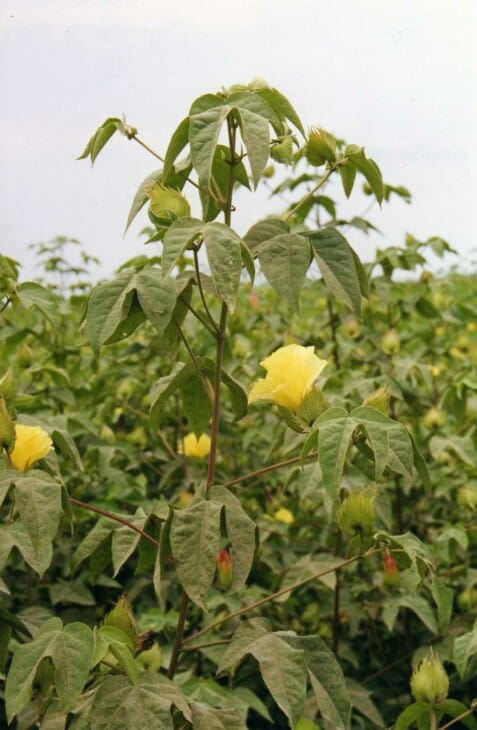
Despite having a different function, the cotton plant is also a part of the mallow family and closely resembles okra. Although cotton plants can grow up to 20 feet tall in the wild, they are often the same size as okra plants when cultivated.
The flowers and leaves of cotton plants also look pretty similar to okras. Depending on the variety, cotton plants may have pink, white, or yellow flowers. The primary difference between a cotton plant and an okra is seen when the flowers fall off.
While okras develop elongated seed pods for eating, cotton plants produce cotton buds, primarily used in the textile industry. Although cotton seeds are high in protein, they are toxic to humans.
9. Jimson Weed (Datura stramonium)
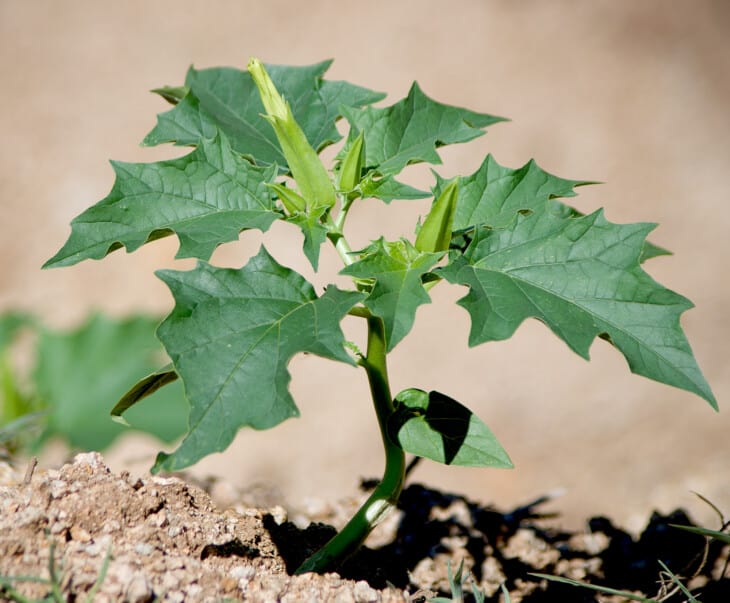
Jimson weed is yet another plant with many similarities to okra. Despite their beautiful purple flowers, jimson weed is a type of weed, making it a primarily unwanted plant in your garden. This weed grows 3 to 5 feet tall, and the flowers and leaves resemble okra.
The flowers have a different shape to those of an okra plant, however. They appear more fanned and have pointed ends. The leaves of the plant are also bigger than that of okra. Jimson weeds also produce seed pods, but they are round and spiky, unlike the smooth, elongated seed pod of okra.
Jimson weed isn’t lethal to humans but may cause delusions and other mild side effects.

